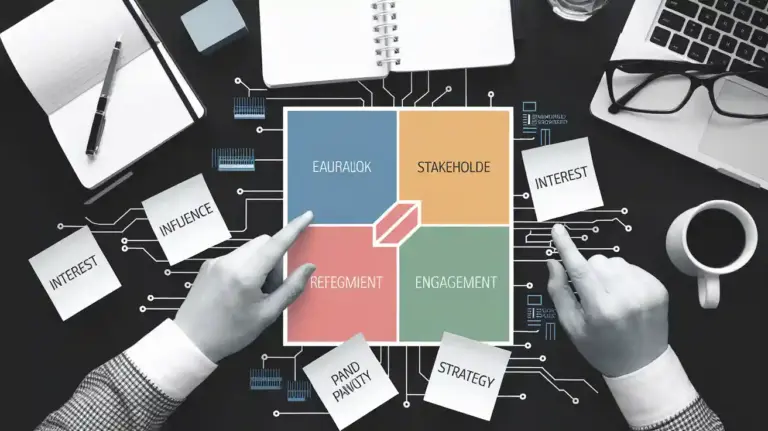Are you struggling to implement changes in your organization? Do you find that your team is resistant to new ideas and processes? Change resistance is a common challenge that many leaders face, but it doesn’t have to be a roadblock to progress.
By understanding the psychology behind resistance and learning effective strategies for overcoming it, you can break down barriers to implementation and achieve your goals.
In this article, we will demystify change resistance and provide practical tips for addressing it. We will explore the different types of resistance you may encounter and how to identify them, as well as strategies for building trust and communication to overcome resistance.
We will also discuss the importance of collaboration and empowerment in implementing change, and how to sustain change over time. By the end of this article, you will have a better understanding of how to navigate change resistance and achieve successful implementation in your organization.
Understanding the Psychology of Change Resistance
You might be wondering why people often resist when asked to make changes, but understanding the psychology behind this resistance can help you navigate these challenges more effectively.
One reason for this resistance is emotional triggers. Change can evoke feelings of fear, anxiety, and uncertainty, which can lead people to resist. When people are emotionally triggered, it can be difficult for them to think rationally and make decisions that are in the best interest of the organization.
Another reason for resistance is cognitive biases. These biases are inherent in our thinking and can cause us to make inaccurate or irrational judgments. For example, confirmation bias can lead people to seek out information that confirms their existing beliefs, rather than considering new information that challenges those beliefs. This can make it difficult for people to see the benefits of a new initiative or change, leading them to resist.
To overcome resistance, it is important to address both emotional triggers and cognitive biases. Start by acknowledging people’s fears and concerns, and provide them with information and support to help them feel more comfortable with the change. Encourage open and honest communication, and be willing to listen to feedback and concerns.
Additionally, be aware of your own biases and work to overcome them. By understanding the psychology of change resistance, you can create an environment that is supportive and empowering, and help your team navigate change more effectively.
Types of Change Resistance and How to Identify Them
Oh boy, here we go again – identifying all the different types of people who will inevitably try to throw a wrench in your plans for improvement. Let’s get ready to spot the naysayers, the skeptics, and the ones who just don’t want to deal with anything new.
Identifying the types of change resistance is indeed crucial as it enables you to tailor your strategies accordingly. Here are three types of change resistance that you might encounter:
Emotional Resistance: This type of resistance is driven by emotions such as fear, anxiety, and discomfort. People who exhibit emotional resistance tend to be deeply attached to the status quo and feel threatened by any changes. They may also fear that change will lead to job loss or a decrease in job security.
Strategies for addressing emotional resistance include fostering a sense of safety and security, providing support and empathy, and offering opportunities for involvement and participation.
Cognitive Resistance: Cognitive resistance is rooted in a lack of understanding or knowledge about the change. People who exhibit cognitive resistance may not understand the reasons behind the change, the benefits it will bring, or how it will be implemented.
Strategies for addressing cognitive resistance include providing clear and concise information about the change, offering training and education, and creating opportunities for feedback and discussion.
Behavioral Resistance: Behavioral resistance is driven by habits or routines that are deeply ingrained in individuals or organizations. People who exhibit behavioral resistance may be resistant to change because it requires them to change the way they work or do things.
Strategies for addressing behavioral resistance include providing incentives and rewards, breaking down the change into smaller steps, and creating a culture of continuous improvement.
Identifying the different types of change resistance and understanding the factors influencing resistance is just the first step. The next step is to develop appropriate strategies to address the resistance. It is important to remember that there’s no one-size-fits-all solution to change resistance, and strategies may need to be tailored to the specific situation and individuals involved.
By taking the time to understand the types of change resistance and developing targeted strategies to address them, you can increase the likelihood of successful change implementation.
Overcoming Resistance Through Communication and Trust Building
Let’s explore how effective communication and trust building can help pave the way for a smoother transition towards achieving your goals. Resistance to change is often rooted in fear of the unknown and a lack of trust in those leading the changes. As a result, effective communication and trust building are essential in overcoming resistance.
Active listening is a critical component of effective communication. By actively listening to employees’ concerns, fears, and ideas, you can gain a better understanding of their perspective and address their concerns directly. It shows that you value their input, which can foster trust and create a more open dialogue. Additionally, providing opportunities for employee feedback can help them feel heard and valued, which can lead to increased engagement and buy-in.
By building trust, you can create a more supportive and collaborative environment. Trust is a two-way street, so it’s essential to demonstrate your trust in employees by providing them with the necessary resources and training to succeed in their roles. It’s also crucial to be transparent about the changes taking place, including the reasons behind them, and how they will benefit the organization and employees. By doing so, you can foster a sense of shared purpose and a commitment to achieving your goals together.
| Active Listening | Employee Feedback |
|---|---|
| Listen without interrupting | Provide opportunities for feedback |
| Clarify what you heard | Respond to feedback |
| Show empathy | Consider feedback in decision-making |
Effective communication and trust building can help alleviate employees’ fears and concerns about change, leading to a smoother transition towards achieving your goals. By actively listening to employees and providing opportunities for feedback, you can foster a more open dialogue and demonstrate your commitment to their success. Building trust requires transparency, collaboration, and a shared sense of purpose. By incorporating these strategies, you can overcome resistance to change and create a more positive and productive work environment.
Implementing Change Through Collaboration and Empowerment
Working together and empowering employees can lead to a more harmonious and inspired workplace, ultimately resulting in successful achievement of goals.
In order to implement change effectively, it’s crucial to involve your team members in the decision-making process. Collaborative decision making allows everyone to have a say in the matter and encourages the sharing of ideas and perspectives. This not only increases the chances of successful implementation but also fosters a sense of ownership and pride in the team.
Empowering team members is another key component of implementing change successfully. When employees feel empowered, they’re more likely to take ownership of their work and be more invested in the project’s success. This can be achieved by delegating tasks and giving team members the authority to make decisions within their scope of work. It’s important to provide support and guidance along the way, but ultimately, empowering your team members can lead to more efficient and effective implementation.
Incorporating collaborative decision making and empowering team members can help break down barriers to change resistance. By involving your team in the process and giving them a sense of ownership, you can create a more cohesive and motivated workplace.
Remember, change can be difficult, but by working together and empowering your team, you can achieve success and overcome any obstacles that may arise.
Sustaining Change and Addressing Unforeseen Challenges
Now that you’ve successfully implemented change, it’s important to sustain it and be prepared to address any unforeseen challenges that may arise along the way.
Long term success is not just about achieving your goals, but also about being able to maintain the progress you’ve made.
One way to do this is by creating a culture of continuous improvement, where everyone is encouraged to contribute ideas and feedback to help identify areas for improvement.
However, despite your best efforts, setbacks are inevitable. It’s important to approach these challenges with a growth mindset and view them as opportunities for learning and improvement.
Instead of getting discouraged, use setbacks as a chance to reflect on what went wrong and identify strategies to prevent similar issues from occurring in the future.
Remember that sustaining change is an ongoing process, and it’s important to stay vigilant and adaptable.
Keep monitoring your progress and making adjustments as needed.
By committing to continuous improvement and being prepared to handle setbacks, you can ensure that your changes will have a lasting impact and contribute to the long-term success of your organization.
How can effective communication help in breaking down resistance to change implementation?
Effective communication is crucial when talking about change management. Clear and open communication can help employees understand the reasons for change and address any concerns they may have. By actively listening to their feedback and keeping them informed, resistance to change implementation can be minimized.
Conclusion
Congratulations! You’ve now learned how to demystify change resistance and break down the barriers that prevent successful implementation.
By understanding the psychology of change resistance and identifying the different types of resistance, you can take proactive steps to overcome them.
Through effective communication and building trust with your team, you can create a sense of collaboration and empowerment that will drive the implementation process forward.
Just like a skilled gardener who carefully tends to their plants, you too can cultivate a culture of change that will sustain growth and address unforeseen challenges.
By staying vigilant and adapting to new situations, you can ensure that your organization continues to thrive.
Remember, change is not always easy, but with the right mindset and approach, you can transform resistance into opportunity and achieve great success.
So go forth, and conquer the challenges that lie ahead!





